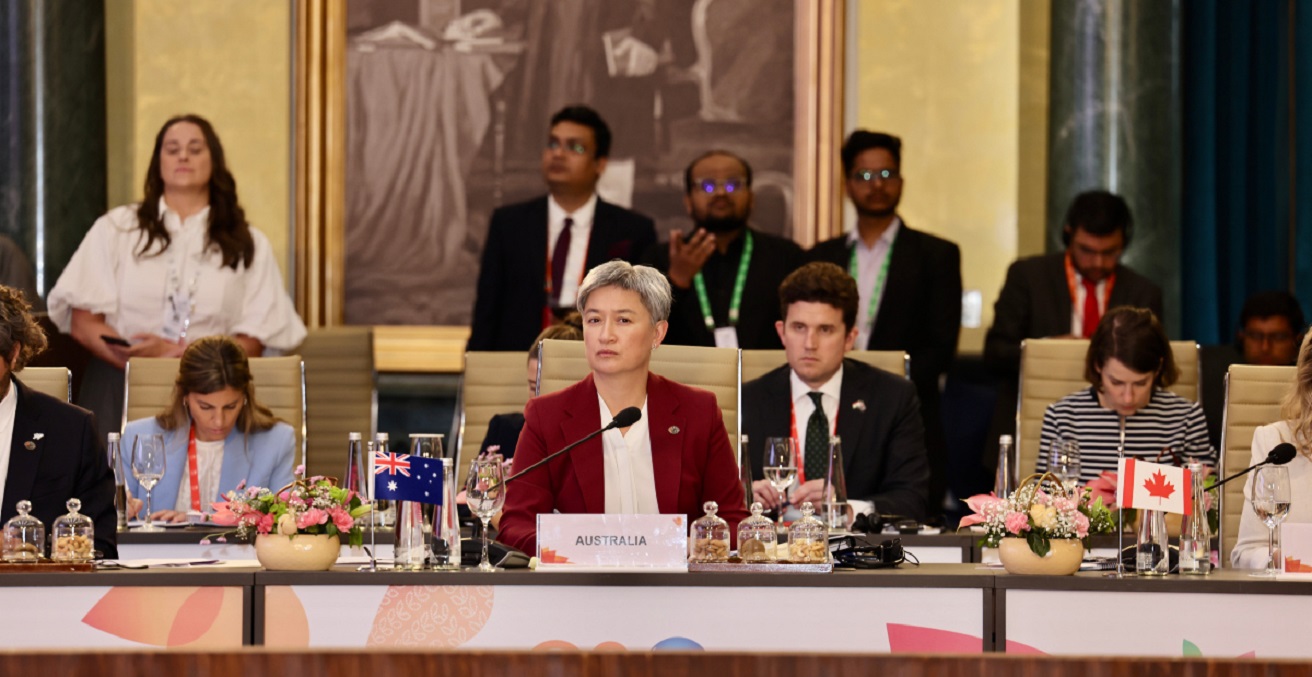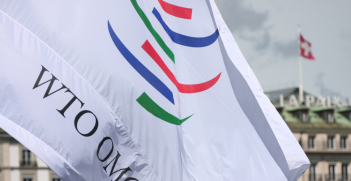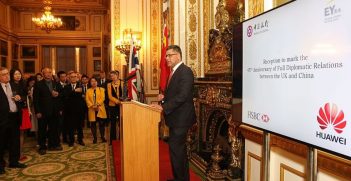The End of the Normative Middle Power Ship

The relative and changing power of states in the Indo-Pacific is assiduously displayed by the Lowy Institute’s Asia Power Index, which ranks states empirically as well as by influence. The 2023 edition reveals a recurring pattern – the US and China continue to grow comprehensively in power, further diverging from the middle power ranks.
The middle powers include Japan, India, Australia, South Korea, Indonesia, Russia, the political entity of Taiwan, and others. Canada, Iran, and Turkey could be included in this list as well if they were included in the Institute’s data, as could Brazil. Several of these states are considered like-minded, while others are authoritarian. Some are involved in war, as in the case of Russia’s illegal invasion of Ukraine. Others, like Iran, have set upon regional destabilisation in their quest for nuclear arms. And then there are what the Global State of Democracy (GSoD) Initiative describes as compromised democracies – these including Turkey, Indonesia, and Brazil.
Empirical approaches to identifying who the middle powers are say little about their diplomacy, behaviour, and values. But they are essential to finding which states to study. Quantitative and qualitative approaches to power indicate both latent and active capacities that can be used to achieve a limited set of sustainable diplomatic objectives. It also suggests that power assessment rankings aimed at middle powers leads to a motley crew of states that diverge more than they overlap in areas of diplomacy, behaviour, and values.
This reality suggests that middle power coalitions, such as MIKTA (Mexico, Indonesia, South Korea, Turkey, and Australia), are awkward partnerships with little commonality except for their self-identification as having less capability than the US and China. This makes sustainable and meaningful diplomacy difficult as the inherent differences, such as between South Korea and Australia, often mean partnerships are non-starters.
The quantitative and qualitative means of measuring commonality in middle power diplomacy today illustrates that the heyday of normative middle power diplomacy is on life support and possibly even dead. Hence the “behavioral” description of middle powers as being inherently desirous of multilateral solutions, compromise, and even striving to be good international citizens is presently incorrect.
Where are middle powers heading today? Australia and Japan offer contemporary examples. They are focusing on pragmatic, regional, and realism-based initiatives that translate into meaningful and sustainable diplomatic initiatives that attempt to secure their national interests. These include examples such as the Quadrilateral Security Dialogue (Quad), AUKUS, the Indo-Pacific Economic Framework, and trilateral infrastructure and connectivity initiatives.
While not eschewing broad-based multilateralism in all cases, both states have tilted towards minilateral groupings and cooperation in the areas of security, technology, trade, and economy. The logic is simple, to achieve their national interests, middle sized and like-minded formulas of cooperation are more effective than large deliberative multilateral organisations.
This is especially true as authoritarian states aim to selectively weaken international institutions, norms, practices, and their associated multilateral decision-making mechanisms. Recent examples include Beijing’s efforts to create a coalition of developing states to vote down a motion to discuss a UN report on China’s serious human rights violations in Xinjiang. We also saw Beijing’s action to bring together Belt and Road Initiative members to abstain from a resolution on Russia’s “aggression against Ukraine.”
Middle power states like Australia and Japan also realise that value-based, middle power diplomacy (the promotion of democracy, human rights, and progressive issues) does not resonate with many countries or political entities in the region. Nor does such moralising contribute to shaping more beneficial great power relations. To be sure, the deepening of strategic competition has occurred.
In the areas of trade, Australia and Japan are pursuing a multiple track approach. While continuing to support the WTO and reform, they also have participated in the Regional and Comprehensive Economic Partnership (RCEP) and the Comprehensive and progressive Trans-Pacific Partnership (CPTPP) agreements. There is a realisation in both Canberra and Tokyo that the WTO is badly in need of reform. At the same time, they see smaller trade agreements as useful tools. RCEP works to embed China in an ASEAN-centered trade agreement. In the case of the CPTPP, the agreement puts Australia and Japan at the forefront of shaping 21st century trade rules, including intellectual property rights protection, labour and environmental law, and limiting the role of state-owned enterprises and their trade-warping influence. They also, while working with others, can control who will join this vanguard trade agreement, as South Korea, the U.K., Taiwan, and China have all indicated.
The Quad and AUKUS similarly enmesh Canberra and Tokyo in partnerships that allow for functional cooperation. These will provide public goods and security to the Indo-Pacific (in the case of the Quad), and help shape the techno-economy and relationship between the state and its citizens. AUKUS, for instance, has been increasing the room for collaboration through joint artificial intelligence, Quantum computing, and hypersonic research.
The politics of the day ensnares the middle powers by the definitions and expectations of their behaviour. The post-World War II period, with the enlarged number of states in the “middle,” encouraged Australian and Canadian scholars and practitioners to find a way to make their nations standout from the others. The normative behavioral approach, born in the 1990s, that emerged was unlike our present, where Australia and Japan (and all middle powers generally), find themselves confronted by great power competition, falling relative power, and rising insecurity. All middle powers today may use more than multilateral solutions. They don’t have to embrace compromise in international disputes, and are not required to be good international citizens. This enables more and varied policies that are designed to achieve outcomes rather than follow an outdated normative prescription.
The lessons for 21st century middle powers in the shadow of a deepening US-China strategic rivalry is that their diplomacy will need to be pragmatic, realistic, and regionally focused. It may include approaches to diplomacy that include lobbying, insulating, and rulemaking in the realms of security, trade, and international law to protect their national interests from Sino-U.S. strategic competition.
No doubt this will be a challenge for Canada, Scandinavian countries, and other middle powers that have wed their diplomacy to normative approaches. Notwithstanding, for middle powers to thrive and realise their national interests in the Indo-Pacific and beyond, Tokyo and Canberra provide useful examples of how to leverage limited resources in practical and pragmatic ways to ensure they are not deleteriously affected by the US-China rivalry.
About the authors:
Dr Stephen Nagy is a senior associate professor at the International Christian University in Tokyo, a fellow at the Canadian Global Affairs Institute (CGAI), a senior fellow at the MacDonald Laurier Institute (MLI), a senior fellow at the East Asia Security Centre (EASC), and a visiting fellow with the Japan Institute for International Affairs (JIIA). He is the author of: Middle-Power Alignment in the Free and Open Indo-Pacific: Securing Agency through Neo-Middle-Power Diplomacy (Asia Policy 17, no. 3, 2022), US-China Strategic Competition and Converging Middle Power Cooperation in the Indo-Pacific (Strategic Analysis 46, no. 3, 2022) Twitter handle: @nagystephen1.
Dr Jonathan Ping is an associate professor in the fields of political economy and international relations at Bond University. His research focus is on middle power statecraft theory, great power statecraft theory and a theory of the nature of hegemony in and from Asia. He is a Director of the East Asia Security Centre. He is the author of: Ping, J.H. (2005). Middle Power Statecraft: Indonesia, Malaysia and the Asia-Pacific (1st ed.). Routledge. Twitter handle: @drjhping
This article is published under a Creative Commons License and may be republished with attribution.





